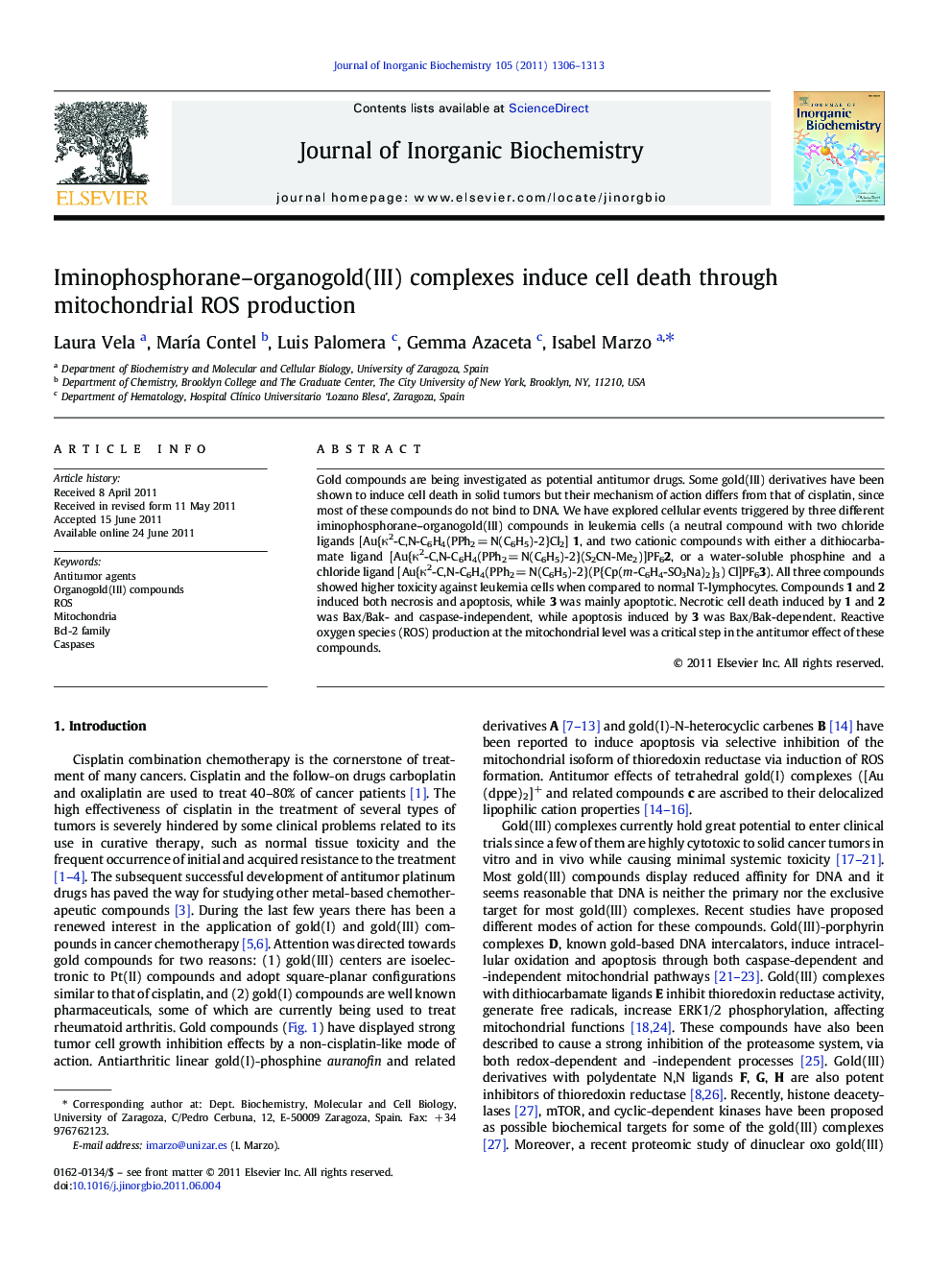| Article ID | Journal | Published Year | Pages | File Type |
|---|---|---|---|---|
| 1316096 | Journal of Inorganic Biochemistry | 2011 | 8 Pages |
Gold compounds are being investigated as potential antitumor drugs. Some gold(III) derivatives have been shown to induce cell death in solid tumors but their mechanism of action differs from that of cisplatin, since most of these compounds do not bind to DNA. We have explored cellular events triggered by three different iminophosphorane–organogold(III) compounds in leukemia cells (a neutral compound with two chloride ligands [Au{κ2-C,N-C6H4(PPh2 = N(C6H5)-2}Cl2] 1, and two cationic compounds with either a dithiocarbamate ligand [Au{κ2-C,N-C6H4(PPh2 = N(C6H5)-2}(S2CN-Me2)]PF62, or a water-soluble phosphine and a chloride ligand [Au{κ2-C,N-C6H4(PPh2 = N(C6H5)-2}(P{Cp(m-C6H4-SO3Na)2}3) Cl]PF63). All three compounds showed higher toxicity against leukemia cells when compared to normal T-lymphocytes. Compounds 1 and 2 induced both necrosis and apoptosis, while 3 was mainly apoptotic. Necrotic cell death induced by 1 and 2 was Bax/Bak- and caspase-independent, while apoptosis induced by 3 was Bax/Bak-dependent. Reactive oxygen species (ROS) production at the mitochondrial level was a critical step in the antitumor effect of these compounds.
Graphical abstractIminophosphorane–organogold(III) complexes (A) induce ROS-dependent cell death (B).Figure optionsDownload full-size imageDownload as PowerPoint slideHighlights► Highly cytotoxic iminophosphorane-organogold (III) complexes. ► Highest toxicity against leukemia cells than normal T-lymphocites. ► Cell death pathways different depending on gold secondary ligands. ► Critical reactive oxygen species (ROS) production at mitochondrial level.
